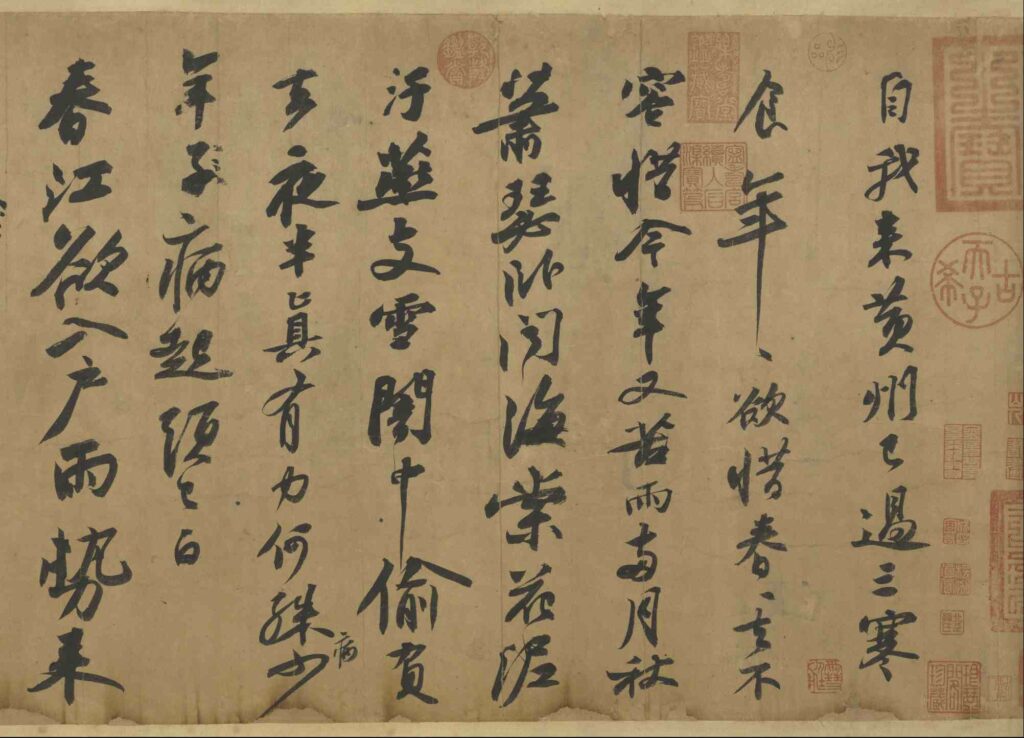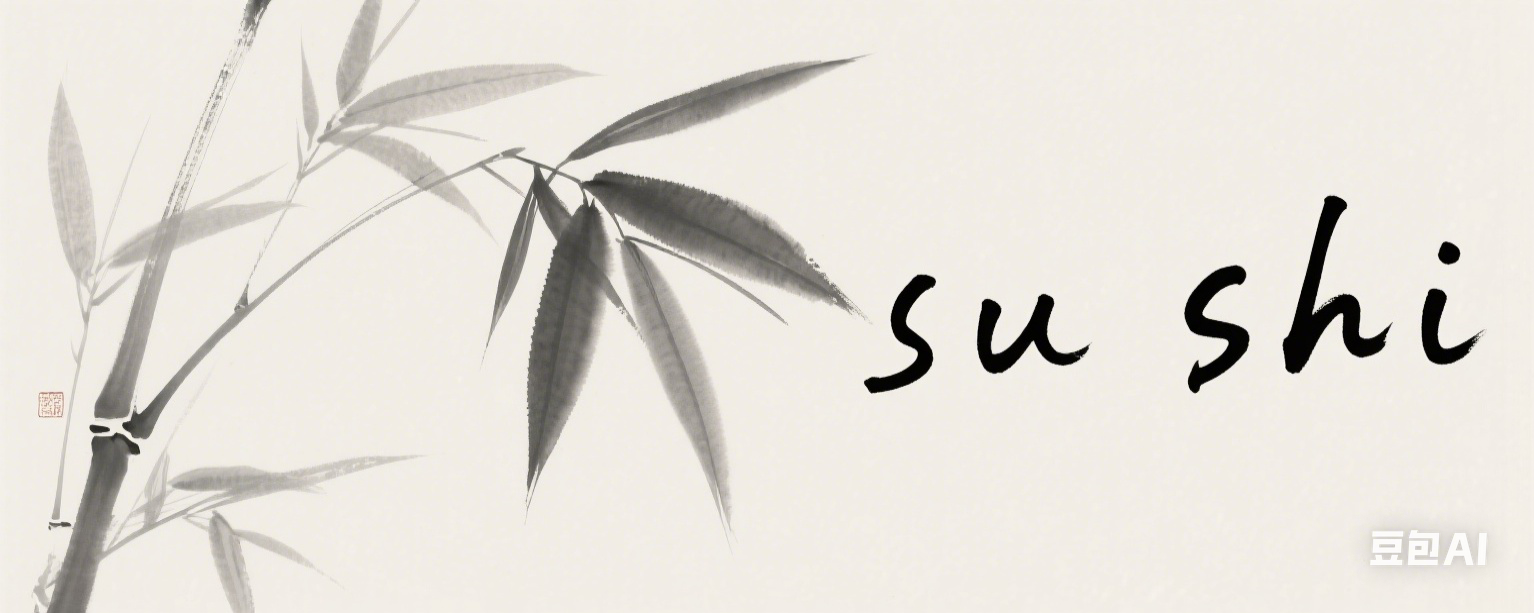“Cold Food Observance Manuscript” (寒食帖) by Su Shi: A Masterpiece of Cursive Anguish

Introduction: Tears on Paper
Why This Matters:
In 1082, exiled poet Su Shi created what’s now called “China’s third greatest cursive script“ – not with perfect brushstrokes, but with wine-stained paper and shaky handwriting. This is art born from political persecution.
Key Terms:
- Cold Food Festival: Ancient Chinese holiday (no cooking, only cold meals)
- Huangzhou Exile: Su Shi‘s 4-year banishment after false accusations
I. The Manuscript as a Time Machine
Physical Details That Speak
| Feature | Significance | Modern Equivalent |
|---|---|---|
| Patchy Paper | Made from hemp – coarse and uneven | Like writing on crumpled notebook paper |
| Wine Stains | Infrared scans show alcohol in ink | Whiskey spilled on a legal document |
| Changed Words | “Cry” scribbled over into “Bitter” | Editing a tweet to sound less emotional |
Interactive Element:
[Before/After Slider] Compare clean calligraphy vs. Su Shi‘s distressed strokes

II. Decoding the Brushstrokes
A. Su Shi’s Handwriting Analysis
- Tight Clusters → Panic attacks
- Characters jammed together like subway riders in rain
- Flying White (Dry Brush) → Running out of ink (and hope)
- Like a pen dying mid-sentence
B. The 3 Emotional Sections of Cold Food Observance Manuscript
- Opening: Steady strokes – “I came to Huangzhou…” (pretending to be fine)
- Middle: Ink splatters – “Cold food, cold vegetables…” (hunger pains)
- End: Faint traces – “Deep gates of the emperor…” (exhausted resignation)
III. Why Art Historians Obsess Over This
1. The “Imperfect” Revolution
- Broke calligraphy rules:
✅ Traditional: Balanced spacing
❌ Su Shi: Words crashing into each other like drunk friends
2. The Hidden Su Shi‘s Self-Portrait
- “Broken Stove” character:
- Top part collapsing → His ruined career
- Bottom strokes thrusting upward → Defiant creativity
